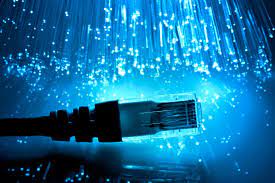If you have a Sonicwall and are having problems getting it set up, or are considering getting one and want to find out more about what’s involved in getting it going, read on.
If you’re having trouble pinging a machine on your LAN behind the Sonicwall, read this.
SonicWall installation
This information is courtesy of MediaOne user Cynthia Morgan, who was kind enough to share it!
Installation can be tricky–it doesn’t follow the manual’s instructions exactly and will require you obtain some information from your existing cable connection before you disconnect. The problem is that you must bind your MediaOne connection to a specific Ethernet MAC address, so you’ll need to note the address of your new SonicWall (it’s actually the serial number), call MediaOne and have it changed.
BUT…once you do that, you’ll no longer be able to see the Internet at all until you’ve successfully connected, which can be a problem if you’re trying to obtain online tech support for the thing.
Here are the steps I followed:
Before you start, turn on the computer your cable modem is attached to and make sure the cable modem is working.
Go to the Start menu, click on “Run…” and type “winipcfg” (don’t type the quotes) and click “ok.” Your IP configuration will come up on the screen. Click on the “More info…” button and select your Ethernet card in the drop-down box in the middle of the screen.
- Now write down the following things:
—Host Name
—DNS Servers (clicking on the button marked “…” will bring up more than one.)
—Ethernet Adapter Address (again, make sure your Ethernet card is selected)
Click OK to close the box, and start setting up your SonicWall.
The SonicWall has two Ethernet ports, one for the LAN connection and one for the WAN (cable modem). It also comes with a standard (patch) cable and a not-so-standard crossover cable (they’re different colors and the crossover is clearly marked). The manual will tell you to use the standard cable on the LAN connection and the crossover on the WAN. That didn’t work for me. I needed a patch cable for both connections or the device couldn’t see the cable modem. (The way you tell if you’ve got the wrong cable is you get absolutely no lights at all on the SonicWall’s connection LEDs when you power up. If you use the correct cable, you’ll get a light at each port where you plug in the cable.)
Plug in the SonicWall and make sure you’re getting power. Then plug the first patch cable into your hub and the LAN port. Plug the second into the cable modem and the WAN port. The SonicWall will go through a test phase (the yellow light next to the power LED will turn on for about 90 seconds) and then you should get steady green LEDs on both the WAN and LAN connection.
Now follow the manual’s instructions for accessing the SonicWall through your Web browser. (Remember, the SonicWall uses a 192.168.168.xxx address, so you’ll need to reset your computer’s TCP/IP address to an address in that range. Set the Subnet Mask at 255.255.255.0)
If everything is setup correctly, you should see the browser screen immediately go dark blue, then a login will appear.- Log in as instructed and pretty much follow the setup as described, but configure the following settings as described below:—DNS server:
enter at least one of the DNS addresses you collected above—Host Name:
as collected from winipcfg—Network Addressing Mode:
select “NAT with DHCP client” - The SonicWall won’t resolve names, so you’ll need to use actual IP addresses to configure mail and news (but I’d wait to do this until after you made sure the connection works at all):
(It actually comes with a DNS resolution utility, so once your connection is live you can also obtain these by going to the correct page in the setup and typing in the URLs.)
Now call MediaOne and have them reset to the MAC address of your SonicWall.
Make sure you reset both cable modem and SonicWall (you can unplug both of them, let them sit for a minute and plug them back in). Once the SonicWall completes its test phase, you should see transmission and reception lights start blinking on the WAN connection.
Now you can test it by going to the SonicWall setup in your browser and logging in. If it worked, the General/Network page should now have filled-in blanks for the “WAN/DMZ” settings on the General/Network page and you should be able to ping known live addresses (or by resolving IP addresses of URLs).
Once you’ve done that, check your browser settings to make sure the proxy is turned off and you’re connecting to the Internet through a LAN. Then launch the browser and give it a spin.
Here is some more information from Cynthia, this time on setting your Client computers to work with the SonicWall.
1) You’ll want to make sure you turn off any proxy settings you may have had in Internet Explorer or Navigator.
2) Go to the desktop and right-click on “Network Neighborhood.” Make sure you don’t have any open applications.
3) Scroll down the network components list until you see “TCP/IP ->” for your Ethernet card. Select it and click on the Properties button. You should see a second box pop up that says “TCP/IP Properties” with the IP Address tab showing.
4) Click on “Specify an IP address” and enter the address you want to give this client in the IP address space. Remember, it must match the first three number groups of your SonicWall’s address or the SonicWall won’t be able to find it. And it’s easiest if it’s a private network number in the 192.168.xxx.xxx range.
5) Enter 255.255.255.0 for the Subnet Mask.
6) Click the “WINS Configuration” tab and make sure “Disable WINS Resolution” is selected.
7) Click the “Gateway” tab and enter your SonicWall’s IP address in the “New gateway” blank. Click the “Add” button (and make sure the new address shows up in the “Installed Gateways” window).
8) Click the “DNS Configuration” tab and click the “Enable DNS” radio button. Enter your user name (your account name, not necessarily your e-mail name (in my case they were different, anyway–your winipcfg, installation paperwork, etc. should show the name, or MediaOne can tell you if you don’t have it). The Domain is mediaone.net or ne.mediaone.net; either work for me.
9) Enter the MediaOne DNS server address(es) into the “DNS Server Search Order” section, then click the “Add” button.
10) Leave the NETBIOS and Advanced tabs alone or restore them to default settings. Click the OK buttons to back out, then restart your computer and re-log in.
If you’ve done this correctly the client should now be able to communicate with the Internet. Mail and News server settings are made as I previously described.



